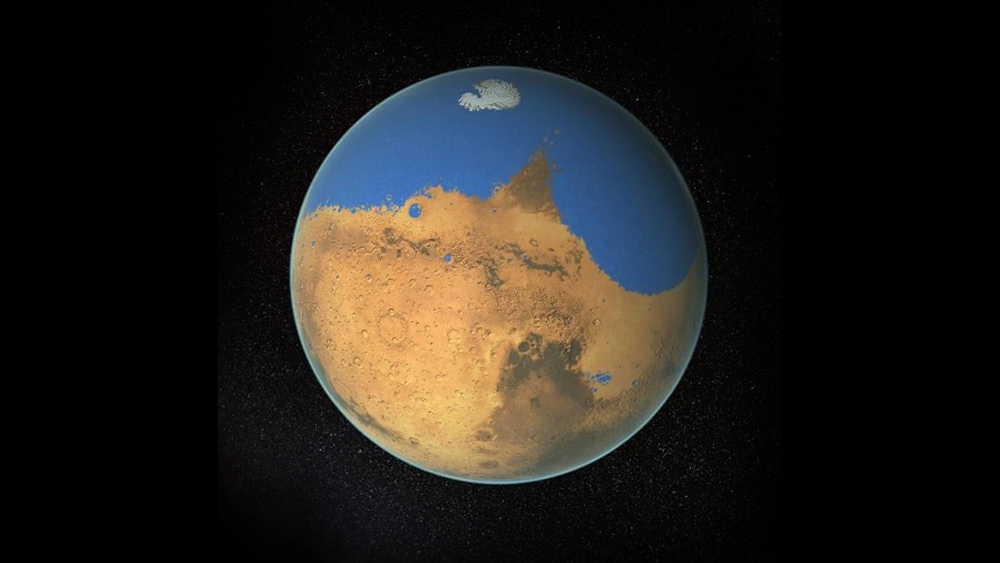Scientists use sound to apparently defy gravity
07/14/2019 / By Edsel Cook

Scientists have made levitation a reality using a rather unexpected tool – sound. An Anglo-American research team experimented with sound-based levitation and succeeded in suspending small bits of plastic in mid-air. Their results will contribute to the field of soft robotics, which uses similar plastic materials to create flexible robots.
The researchers also believed that their findings may shed light on the mysterious earliest stage of planet formation. They investigated how materials came together and formed a cluster on a surface that was not hard or flat. They received support from their home institutes, the University of Bath and the University of Chicago.
For their experiment, the researchers acquired tiny pieces of a widely used type of plastic called polyethylene. An individual particle measured just one millimeter in diameter.
They used sound waves to levitate small groups of six to seven particles and control them in mid-air. They observed the 2D interactions between the plastic pieces in each set.
The researchers discovered that groups with five or fewer particles always assembled in a certain way. But once the number increased to six or more, the particles gained the ability to configure their group into more than one shape.
Sound waves not only levitate particles – they also influence the shapes of clustered pieces
The researchers used high-speed cameras to take snapshots of the floating particles. They also evaluated the shapes available to groups of six or seven plastic pieces.
Their results showed that six particles sufficed to form either a chevron, a parallelogram, or a triangle. When the researchers brought the number up to seven, the cluster assembled into a shape that resembled either a boat, a flower, a tree, or a turtle.
Furthermore, they found it possible to affect the clusters and increase the chances of a certain shape showing up. They pulled this off by fiddling with the frequency of the sound waves.
While altering the shape of a cluster, they observed that one particle served as the hinge for the reassembly. The piece swung around its companions and got the group to rearrange itself into a new shape.
“Six particles is the minimum needed to change between different shapes, which is where things get interesting,” explained Bath researcher Dr. Anton Souslov. “We’ve found that by changing the ultrasound frequency, we can make the particle clusters move about and rearrange.”
New technique contributes to the fields of soft robotics, wearable electronics, astronomy
The hinge behavior of particles offers potential new ways to put together objects into complicated shapes. The researchers believed that their discovery might enable new materials, products, and tools in the fields of soft robotics and wearable technology.
Soft robots and wearable electronics are more flexible and versatile than their rigid counterparts. They can use manipulable materials that change shape.
“Understanding how to control ultrasonic forces is really important – ultrasound is already used throughout industry and in household products from making tiny droplets in humidifiers (for dry Chicago winters) to cleaning gunk off hard surfaces,” Souslov noted.
The sound-based levitation approach also makes it possible to simulate the creation of moons, planets, and other celestial bodies while remaining on Earth.
Researchers are working on methods that replicate the way space dust comes together to form a planetesimal. However, these experiments need low gravity or zero-g conditions, which require an expensive trip into suborbital space or low Earth orbit.
For their next study, Souslov and his colleagues will try using acoustic levitation to manipulate more particles. Increasing the number of pieces makes it possible to build complicated structures.
Sources include:
Tagged Under: acoustic levitation, acoustics, anti gravity, breakthrough, cool science, discoveries, formation, future tech, Gravity, innovation, inventions, levitation, particles, physics, research, Soft Robotics, sound, sound waves, technology, wearable technology, weird science
RECENT NEWS & ARTICLES
COPYRIGHT © 2017 DISCOVERIES NEWS



















